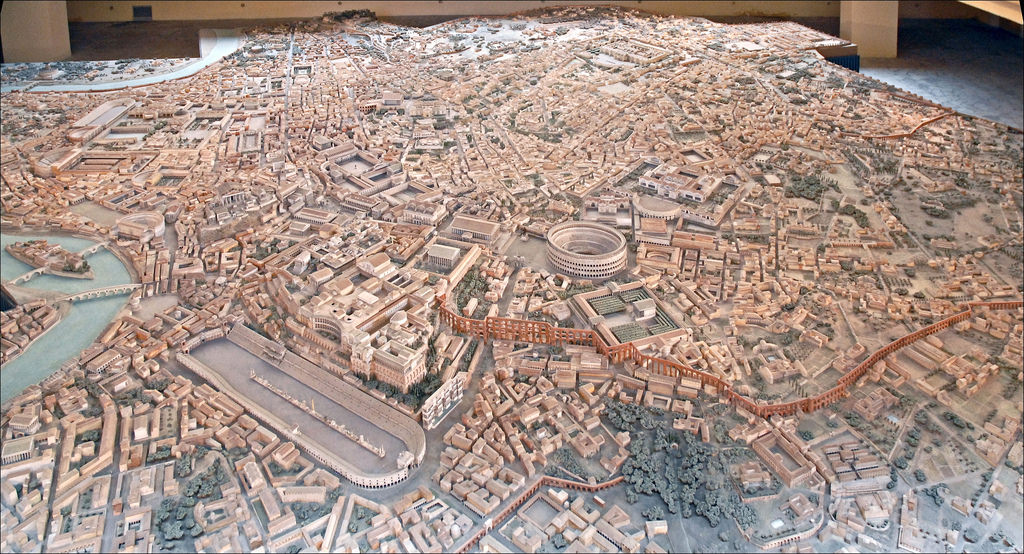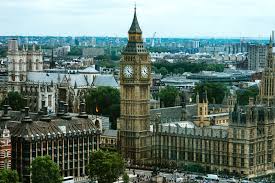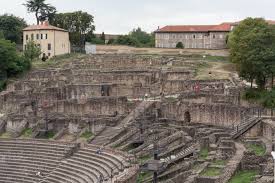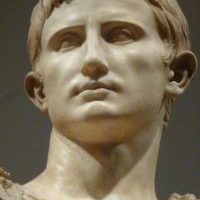Hi, as I announced to you last week, today we will talk about the daily life of the Romans. Specifically from their urban environment. For this, I will present 5 cities among the most well-known in all of Ancient Rome, in terms of notoriety, population, functions… In this article, I will present only the cities during Roman antiquity and not at present. Here are the 5 most important Roman cities in Ancient Rome.
First Roman city : Rome

Rome is of course the most famous city in ancient Rome. Both thanks to its history and its monuments … Rome was probably created in the 8th century. Indeed, traces of civilizations dating from this period were found on Mount Palatin. Subsequently, the inhabitants of the mountain descended into the plain and thus formed Rome. By coming together in this way, they were stronger because they were grouped together and were protected by the surrounding hills as well as by the ramparts.
According to legend, Rome was founded on 21 April in 753 BC, on Mount Palatine by Romulus (it is also by his name that was born that of Rome) after the latter killed his brother Remus. Thus, Rome has several nicknames including “the city of 7 hills” because the hills surrounding it are numbering seven, the “Urbs” which means “the city” in Latin or the “Eternal City” because of its viability for nearly 3000 years.
But Rome is a city with several symbols including the Wolf. The latter comes from the legend that the twins, Romulus and Remus, after their abandonment were found and then raised by a wolf. The capital of Italy has always been the motto “SPQR” (the Senate and the people of Rome) which has remained unchanged to this day. Today, many Roman monuments have passed through the ages such as the Colosseum, the Forum, the Circus Maximus … These monuments are also one of the main reasons why Rome has such great historical interest. Moreover, thanks to these, it is the city with the most monuments in the world.
Now let’s talk about its evolution over time. So at the time of its creation, Rome was only a group of villagers but under Augustus, it is estimated that its population grew exponentially and numbered between 800,000 and 1,000,000 people, making it the most populous city. Subsequently, this figure far exceeded one million or two million according to some estimates. Then it regressed to 450,000 in the 5th century and 30,000 a few centuries after the fall of the Roman Empire. Despite all the variations in the number of inhabitants, Rome is one of the only cities to have ever been inhabited in almost 3000 years.
As far as the history of the city is concerned, there is a lot to say. First, following the unification of the various tribes, Rome became urbanized and grew rapidly. But in the 4th BC, Rome was invaded by Gallic Senons who ravaged the city. Subsequently, the Romans took revenge in the 3rd century BC by taking Etruria, Gallic territories to the north and Greek cities. Thus, Rome dominated more than half of the peninsula and following other conquests, it became the most powerful city in the entire Mediterranean basin.
Then, when Julius Caesar was in power, he had great works done in the city and thus allowed it to be enlarged. Subsequently, his successor Augustus, will do the same by creating new monuments such as the temple of Caesar, the Basilica Julia … and through this Rome expanded in a consequential way.
Subsequently, many events harmful to the city happened, such as the fires that destroyed part of it. Like that of 64 AD, during the reign of Nero or in that of 80 under Emperor Titus to name but a few. Because of this, the city had to receive expensive repairs. Finally, the real end of the various constructions in Rome took place in the 3rd century, under Aurelien, when the latter erected important ramparts to protect Rome from barbarian invasions. Rome later lost its glory when Constantine named Constantinople as its second capital, and so its decadent glory accelerated to oblivion. Then during the fall of the Roman Empire, Rome a city of the Byzantine Empire. This city was therefore throughout its history of great importance and it is still the case today.
Second Roman city : Nimes

First of all, you should know that Nîmes is a city of Occitanie which is a French administrative region. It is located in the department of the Gard more precisely between the Mediterranean Sea and the mountains of the Cévennes. This city attracts a lot of tourists thanks to its history rich history in relation to ancient Rome… Indeed it was an important fore-post at the time of the Roman Empire. At the time it was called Nemausus and had a population of 20,000.
It is known for its majestic monuments and still in good condition. One can mention the Arena of Nimes, a two-storey amphitheatre dating from the year 70 still in operation for concerts and bullfights, La Maison Carrée which is a Roman temple in white limestone (it is also the best preserved in the world), The Pont du Gard , a three-level aqueduct but also the Magne Tower. All these monuments are about 2000 years old The foundation of this city dates back to antiquity, specifically in the 2nd century BC. Moreover, it bears the nickname “French Rome” which proves its importance during this period.
But then how was it created? The Romans conquered southern Gaul in the 2nd century BC. In 120 BC, they created Nimes, a colony on the site of a Gallic oppidum. First populated by Roman settlers, it developed and reached its peak in the 2nd century. Nimes was one of the great Roman Gallo cities of the Empire. His example shows that Romanization was first made by cities. It also shows that the traces of the Roman Empire lasted all the time because many buildings of this period are still visible. Even today, it is a city of great political, economic but above all tourist importance.
Third Roman city : London

A very important city not to forget is London. Indeed it is the capital of the United Kingdom but has a rich past at the level of the Roman Empire. Today it attracts many tourists thanks to its monuments and its history. But let’s focus on its Roman past.
At the time it was called Londinium founded by the Romans following the invasion of the year 43 led by Emperor Claudius. In addition, this city covered a modest area of about 1.4 km which is rather small for a city of such size. It should also be noted that the London Bridge was at the centre of the network of roads created by the Romans which is a crucial place of passage to cross the Thames. Many traders were attracted which contributed to the development of the city. As a result, London became a city of trade and commerce and the Thames had an important role in allowing goods to be transported to the centre of the city.
But not everything went according to plan because a few years after the construction of the city, Queen Boadicée at the head of the Celtic people took aim at London. Unfortunately the Romans did not have time to build a strong army to deal with the attacks. Many merchants died there and the city was partly evacuated. London will be totally looted and destroyed.
But the Romans did not dwell on failure and the city of London was rebuilt and prosperous. In addition, the city will surround itself with walls more commonly known as the London Wall and at its peak the population of Londinium will reach between 45,000 and 60,000 people. When the Roman Empire began to decline, the troops protecting the city were recalled to the mainland, so the population of that city would decrease. This period is called the Dark Ages of London. London was in ruins and virtually abandoned after the Romans left Britain in 410. In Roman times Londinium experienced ups and downs but was always present. Today, the capital of the United Kingdom has made a name for itself on a global level in terms of tourism and economy.
Fourth Roman city : Pompei

The fourth city, unlike the previous ones, no longer exists today. Indeed, it was destroyed by the eruption of a volcano. This is Pompeii. Pompeii is a well-known city in ancient Rome because of its tragic past. It was the Osques (Italian people) who founded this city. (Here we are only interested in the Roman era of the city). So from 290 BC, it fell under Roman influence and because of it, sometimes waged war in Rome.
Later, in 80 BC, the Romans took control of the city. Many ancient inhabitants left the city and Roman veterans settled there, instilling Roman culture in the city. Then, the city became flourishing, constantly expanding and expanding at the economic, agricultural, … As a result, the quality of life of the Pompeians increased and many merchants made their fortune there. The city continued to expand until 5 February 62 AD, when a strong earthquake shook the city causing extensive damage.
As a result, work was quickly carried out and completed for the reconstruction of public and private monuments. As far as the underprivileged class was concerned, their destroyed houses were not rebuilt. It was then in 70 AD that a new earthquake struck the city. At that time, residents decided to leave the city and settle in quieter and less dangerous places. When they leave, they sell their properties at low prices and thus the richest acquire large properties.
And so it was on August 24, 79 that the eruption of Vesuvius took place. The fiery clouds resulting from the eruption quickly covered the city with several meters of deposit, killing the inhabitants and trapping them in the ash, but there were also nearby towns such as Herculanum among others which was also devastated. In the disaster, the inhabitants were frozen forever in the ashes, retaining their facial expression or the movements they were making.
The city was rediscovered in the 17th century and subsequently numerous archaeological excavations were carried out there. This archaeological site is one of the most important in the world. Indeed, it allowed us to learn much more about the daily life of the Romans. Today, this city is almost entirely discovered of its layer of ash and open to the public. This is the Roman place I would most like to visit. Tell me in comment, which archaeological site or place you would most like to visit.
Fifth Roman city : Lyon

For the latter city, we are going to talk about a French city. Indeed, it is currently the capital of the Auvergne-Rhône-Alpes region. This is of course Lyon. Again, as in previous cities, we will focus only on its Roman history. And not to its history in other eras. It was therefore a former officer of Julius Caesar: Lucius Munatius Plancus, in 43 BC who created Lugdunum (at the time). The purpose of his creation is to keep an eye on the conquered colonies, in this case, the Allobroges.
At first, it was only a small town with very little fortified. But quickly, and thanks to its strategic location, it acquired high economic and political functions. As a result, it held an important place in the Roman Empire. As a result, it became the capital of Gaul.
Throughout its history, it saw various emperors pass by, such as Augustus, who had a money shop set up. There is also Caligula or Claude who was born in this city … It was also of great support to Rome when it was the victim of destructive fires. Indeed, the Lyonnais helped the Romans financially to restore the capital of the Empire.
Moreover, being strategically well positioned, it serves as a place of passage for various emperors as when Augustus set out to conquer Germany. Lyon had become an important place of passage and communication, served by many roads and means of transport. In the 2nd century, Septime Severus plundered the city following its victory over Tournus. It was at this time that the money shop was set up by Augustus. Subsequently, in the 3rd century, the city was not affected by the crisis.
However, it gradually lost its power. Indeed, it lost its title of capital and it was Trier who became the capital of Gauls. Subsequently, the city gradually loses its luster, due to the communication channels that no longer pass through it. In the 4th century, it gradually fell into oblivion and was deserted by many inhabitants. In Roman times, Lyon was a very important city in the life of the Empire. There were many places being attached to it such as the sanctuary of the Three Gauls, the monetary workshop … but today, few of these monuments have survived. Indeed, there are only a few monuments left like the Ancient Theatre, the Odeon … Which is little compared to its former glory.
I hope you enjoy these 5 presentations of Roman cities. Don’t hesitate to comment on your favourite Roman city. As for next week’s article, it will focus on numismatics, specifically on each bronze Roman coins. See you next week!
Get my book Around the Roman Currency for free by clicking here



